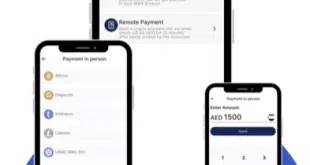Courting and retaining high-risk merchants can yield high returns. But it’s a lot of work.
It’s no simple task, but one that can yield enviable returns.
Finding the profit in high-risk merchants requires diligence, a knack for customer service, and a commitment to thoroughness. It also requires deep knowledge of chargeback ratios, the card-brand rules, and how the banking system works, an understanding of the merchant category, familiarity with merchant billing and shipping policies, an awareness of criminal use of the payment processing system, and careful attention to government regulation.
Even with that hefty list of requirements, many independent sales organizations and acquirers still pursue high-risk merchants.
“There’s always the satisfaction of serving someone who can’t be served some place else,” says Dennis DeLaRosa, president of International Processing Solution Inc., a Valencia, Calif.-based ISO. Working with high-risk merchants is not about helping bad actors, DeLaRosa says, but about helping those associated with a social stigma.
Finding Merchants
Indeed, high-risk merchants generally fall into one of two categories, says Adil Moussa, principal at Adil Consulting LLC, an Omaha, Neb.-based acquiring consultancy. There are merchants whose products are morally frowned upon, such as adult entertainment, online gambling, and multilevel-marketing programs, Moussa says. The other group includes those who create custom-made products or provide paid-in-advance merchandise or services, such as furniture, airfare, or travel.
“The reasons these last ones are considered high-risk is due to the fact that between the time they collect the money and the time the customer enjoys the product, there is a risk they can go bankrupt, and if they do, the acquirer is the one that needs to reimburse all the people who paid for the service,” Moussa says via an email to Digital Transactions.
ISOs and acquirers courting high-risk merchants have many ways to find them. Referrals from existing merchant clients, banks, and other third parties is one avenue.
Another, favored by Instabill, a Portsmouth, N.H.-based payments provider, comes from continually updated content on its Web site, says Wendy Jacques, Instabill sales manager. That requires diligence to ensure the subject is relevant and the ISO’s content has the best chance of landing on the first page of a search engine’s results.
DeLaRosa likes the referral technique. A recommendation by a merchant that already has a relationship with International Processing goes a long way, he says. Having a trusted source provide the referral can alleviate many concerns about bad actors signing up for electronic payments, he says.
Attending trade shows that focus on a particular merchant vertical also is a favored prospecting tool.
Intense Scrutiny
While the card brands long have offered chargeback-monitoring programs, anti-fraud measuring services, blacklists of prohibited merchant-account owners, and other tools to limit the payment card system’s exposure to risk, much of the actual data collection and monitoring is handled by the acquirer.
Now, acquirers have to contend with increased government scrutiny, as agencies such as the Consumer Financial Protection Bureau and the Federal Trade Commission show increased interest in electronic payments.
One change that DeLaRosa has witnessed is more attention to anti-money-laundering efforts, which amped up post-9/11 to quell the ability of terrorists and criminals to move funds electronically. Now, however, that focus seems to have intensified.
“What we’re seeing more now is money-laundering compliance,” he says. “We saw it change around 9/11, and ongoing the scrutiny becomes greater. It’s from Operation Choke Point and other enforcement actions, and they’re being enforced by entities that may not understand our business space.”
In 2015, for instance, the CFPB named four merchant-acquiring companies as defendants in a lawsuit against six people and their associated debt-collection companies. The agency alleged that the defendants attempted to collect millions of dollars in so-called “phantom debts” from consumers that the consumers either did not owe or were not owed to the debt collectors themselves.
And the FTC settled a case with an ISO, CardFlex Inc., over charges it allegedly processed more than $26 million in authorized charges for a company known as I Works. “We’re certainly seeing signs the agencies are getting much more involved,” DeLaRosa says.
Industry regulations also affect how ISOs and acquirers view high-risk merchants. At Instabill, a chargeback ratio threshold set by Visa Inc. necessitated even more stringent statement reviews, says Jacques.
“These regulations really make you understand how to break down processing statements,” Jacques says. “Processing statements are all different, so learning how to read them during the underwriting phase is a big step in whether we move forward in the application process with the merchant.”
‘They Always Need Reserves’
Underwriting is a crucial phase for any merchant, but for high-risk merchants the process is intensified. Many merchant applicants may have sound financial backing and few dings, but they likely still will have to put up reserves.
Some merchants may be hesitant to mention reserves in fear it may not be necessary, but Shopify Inc., an e-commerce platform that also provides merchant services, advises adopting an upfront attitude. Avoiding discussion of reserves is flawed logic, Shopify says in a blog post “because it’s not like the underwriter isn’t going to go down that road anyways if the risk score is getting too high.”
Reserves have a place in serving high-risk merchants, says Moussa. “Usually reserves are only there to cover for eventual issues, such as going through an unforeseen bankruptcy, high insurance claims, or settlement fees in case of accidents,” he says. “The higher the reserves, the less risk for the acquirer, but the less cash for the merchants that will not be able to operate their businesses efficiently.”
Reserves for merchants classified as high-risk at Instabill typically come to at least 10% of their expected monthly card volume, says Jacques. “Some banks will allow a six-month rolling reserve,” she says. “Other times it will just be a 10%-or-above reserve held until the end of the contract. Obviously, if the bank doesn’t place a reserve, that extra percentage is going to be in their daily or weekly payout.”
Moussa says reserve amounts may have to be large enough to cover three to six months of merchants’ revenues. “It’s a hard negotiation that needs to result in a balance that allows the merchant to operate,” he says.
DeLaRosa is suspicious of many merchants with processing histories that appear so clean as to not need a reserve. “I always pause and question because I haven’t met that merchant,” he says. “They always need reserves.” One reason is trailing chargebacks, which consumers initiate after delivery of the product or service. While merchants may view reserves as a necessary evil, banks have to be protected from liability, he says.
Educated Merchants
High-risk merchants also understand their processing costs are going to be a little higher. “Merchants understand they have to pay for a service,” DeLaRosa says. The difference between now and a few years ago is that merchants expect the service now, he says.
Indeed, merchant knowledge of how the payment industry functions and its pricing has only increased, says Jacques, because of changes in regulations made by the card brands.
This has made merchants “more educated and understanding that they are a high-risk merchant when they always thought they were a low-risk merchant, especially here in the U.S.,” she says. “We see more and more high-risk merchants being turned away by domestic banks in the U.S. because they are classified as high-risk,” with acceptable chargeback ratios the culprit.
Once approved, however, high-risk merchant accounts can yield desirable revenue, but a portfolio made up solely of such accounts is not wise, says DeLaRosa. Typically, his ISO’s portfolio consists of 60% low-risk and 40% high-risk merchants, but that can flip-flop, he says. “It really depends on the acquiring banks and their boarding appetites.”
Extra caution steps in should high-risk merchant account approvals climb above 50%, DeLaRosa says. “When it gets to over 50% I like to be a little cautious because that tells me a bank may be saying yes to get the business and not necessarily vetting it as much as they could or should. A tell-tale sign of a bad portfolio is when you get more than 50% high risk.”
But some of that revenue may be eaten by the higher fees charged by banks, says Jacques. “There is the potential for higher profits,” she says, “however, in comparison to low- and medium-risk merchants, it’s not a big difference most of the time.”
On average, an acquiring bank nets about 1% on a high-risk merchant, with the agent receiving a similar amount, DeLaRosa says.
“In most high-risk deals, there’s two percentage points above interchange,” he says. Processing fees beyond that level are suspect. “Anything beyond that in my mind leads me to believe that merchant is going to be a liability,” DeLaRosa says. For his company, two percentage points above interchange is more the norm than an account priced at 8%, for example.
‘Worth the Risk’
Risk is part of payments, and high-risk merchants, despite the additional underwriting tasks, compliance requirements, and elevated customer service, remain a very attractive customer group.
“Banks will accept high-risk merchants,” Jacques says. “The potential for higher revenue is worth the risk. There is always going to be a need for high-risk industries to process credit cards.”
Online shopping, for example, is only going to increase, she says. “The challenge lies in how can we become smarter in educating the merchants on better business practices to keep their high-risk merchant account operating.”
For ISOs and acquirers, the challenge is in knowing who the merchants are, says DeLaRosa. “What we really need to make sure of in the payments space is knowing who you are ultimately doing business with,” he says. “We as an organization do everything we can ensure we know who we’re doing business with.”




